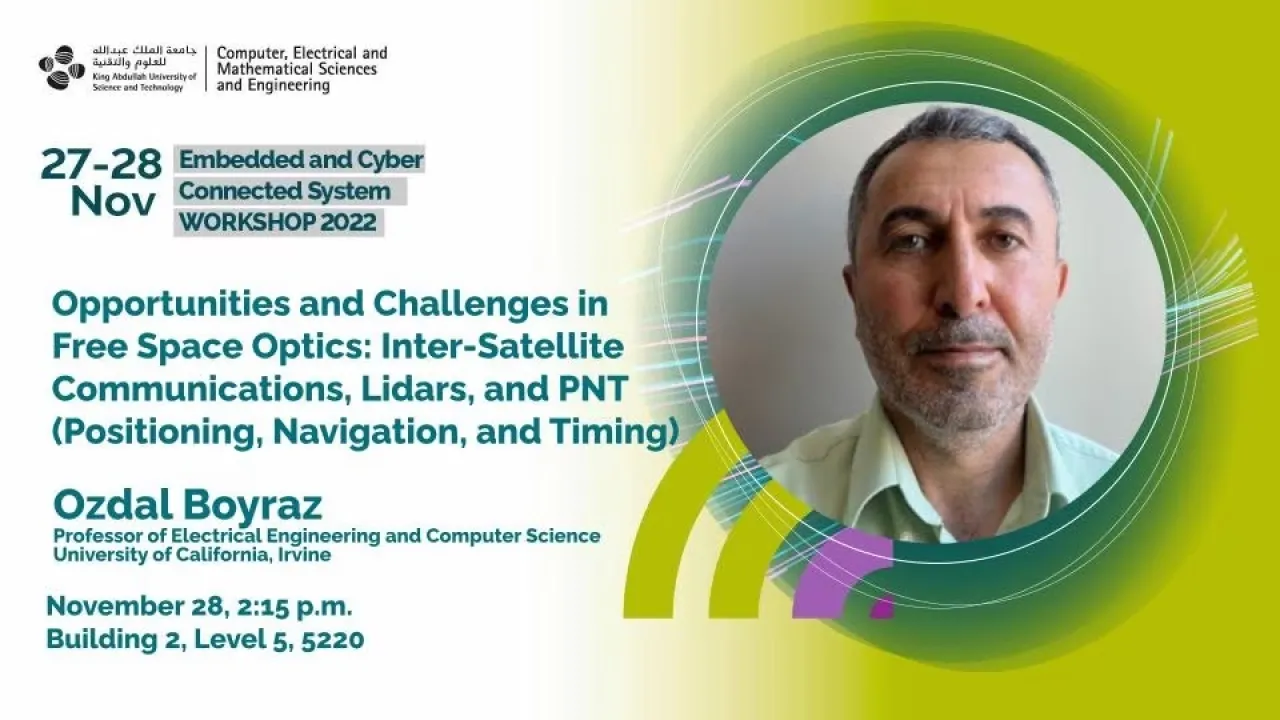
Opportunities and Challenges in Free Space Optics
- Prof. Ozdal Boyraz, University of California, Irvine, USA
B2 5220
Overview
Opportunities and Challenges in Free Space Optics:
- Inter-Satellite Communications,
- Lidars,
- and PNT (Positioning, Navigation, and Timing).
Abstract
Recent developments in communications, such as providing broadband access to rural areas and enabling high bandwidth inter-satellite communications open new opportunities in free space optical communications. In this talk, recent testbed development efforts on more than 10km free space optical communication link development with more than 80Gb/s data capacity under the NSF PAWR program in rural Iowa State. Additionally, present challenges associated with inter-satellite communications where the distance between two nodes is constantly varying from a few kilometers to over 1000km. Challenges associated with pointing and tracking, mechanical jitter compensation, and potential omnidirectional inter-satellite optical communicator architecture with more than 1Gb/s data capacity over 500km in CubeSats will be discussed. Once the optical system goes into CubeSat, where size, weight, and power are limited, how new Lidar architectures should be modified to achieve the similar performance of large satellites? New Lidar techniques for CubeSats and their potential applications to PNT will also be discussed.
Brief Biography
Dr. Ozdal Boyraz received his M.S. and Ph.D. degrees from the University of Michigan, Ann Arbor, in 1997 and 2001, respectively. After two years of industrial work at Xtera Communications, Allen, TX, he joined the University of California, Los Angeles as a postdoctoral fellow in 2003. After leading pioneering work on silicon photonics and optical signal processing techniques based on time-stretched systems at UCLA, he joined the University of California, Irvine as an assistant professor at the EECS department in 2005. He continues to work as a full professor at UC Irvine at present. His research areas include silicon-based optoelectronic devices, microwave photonics, optical communication systems, optical signal processing, free-space optical communications, and lidars. He has over 250 journal and conference publications and seven issued patents. He is a recipient of the 2004 UCLA Chancellor Award and DARPA Young Faculty Award in 2010.
Dr. Boyraz is a senior member of Optica (former optical society of America, OSA).
